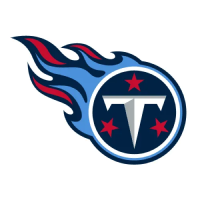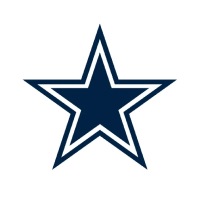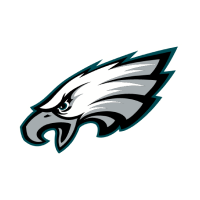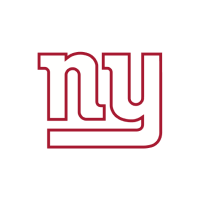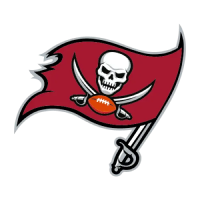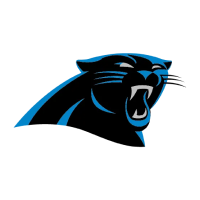Have you ever wondered why a guy seemingly so equipped and well-statured to anchor the right side of the line just doesn’t cut it there? Or why a player with all the necessary athletic skills for the left tackle spot makes a better player on the right side? While the rapid exponential growth of media, analytics, and scouting tools have introduced a plethora of information at our fingertips, sometimes it’s best to just keep it simple and avoid change.
For many, the right and left sides of the line are interchangeable spots. If a player is able to dominate at right guard, he surely can do the same on the left side, right? And if a tackle is dominant on the left side, it would require little transition to the opposite side.
As we’ve seen with the Detroit Lions’ No. 7 overall selection Penei Sewell, that simply isn’t the case.
For context, envision a snowboarder being asked to immediately switch their lead leg, or a soccer player primarily working opposite their dominant foot. Or furthermore, trying to brush your teeth with the opposite hand. While it’s completely doable, the marathon of hours, reps, and muscle memory are vacant, leaving a serviceable gap for players to fill when asked to switch to the opposite side of the offensive line. Comparably, it isn’t as simple as asking a corner to slide inside or moving a receiver across the formation, the entire shift in footwork, vision, and mental fortitude is put to its ultimate limit.
Deemed by many as a generational talent during his illustrious career at the University of Oregon, Sewell sat out the 2020 COVID-rattled college football season in preparation for the 2021 NFL Draft. It was a move relatively unquestioned within front offices around the league due to his immense ceiling, and Sewell entered Detroit as the preemptive starter on the left side of the line. However, as the summer has progressed, his projection has taken a massive hit, as his move to right tackle has come with an army of skeptics toward newly-minted head coach Dan Campbell.
For certain tackle prospects, they are anchored to either the left or right side of the line. For players like Sewell, who mauled defenders in Eugene, Oregon, his elite athleticism and versatility provided options for Detroit, who ultimately named him the starter on the right side opposite Taylor Decker. Traditionally the team’s best pass protector, the left tackle spot has presented much to be desired for the Lions, especially considering the lack of success Sewell has experienced on the right side. Taking a player with the fundamental skill set of Sewell in the top 10 selections of the draft should produce a situation where the player is inserted at the spot in which he’s most comfortable—and in fact, where the player can thrive, an approach we’ve most recently seen with Tristan Wirfs in Tampa Bay last year. Why Campbell hasn’t moved Decker to the right side to have him adjust instead of Sewell is still mind-boggling, considering the fact Sewell is, well, heads above Decker from a talent standpoint. And with newly acquired quarterback Jared Goff in town to lead the offense, inserting Sewell at right tackle hasn’t made much sense thus far considering his preseason grade of 38.6, 59th-best of all first-year linemen.
There is hope, however. We shouldn’t look too much into the preseason, and reps are reps, but a glance around the league offers similar switches that have panned out quite well. Philadelphia’s Lane Johnson was looked upon as a primary left tackle out of Oklahoma nearly 10 years ago, but his immediate jump to the right side has progressed him into one of the league’s top right tackles. Similarly, 15-year veteran Andrew Whitworth, currently set to protect Matthew Stafford’s blindside in Los Angeles, was a mauling right tackle prospect out of LSU. Nearly two decades into his NFL career with two All-Pro selections and four Pro Bowls, and it’s safe to say Whitworth’s move to the left side has worked out quite well.
Mechanics and technique are often taken for granted. You may notice when a player uses sloppy technique or when a lineman gets beat off the edge due to slow hands or a weak anchor, but few people consider the talent required to change alignment at the highest level of their sport following years of muscle memory and positional focus.
"It’s not that easy," Sewell said. "Man, it's a whole different feel… Let's say I'm right-handed so I've been writing right-handed my whole life, and then one day you're just asked to write your full name left-handed at full speed, the same speed that you write with your right hand… So yeah, it's a little bit of an adjustment."
It takes time, but Sewell has all the necessary traits to dominate once he finds his footing.
Filed In
Related Articles
NFL Draft
Arik Gilbert Doesn’t Need Big Workload To Be A Top NFL Draft Pick
- Aug 22, 2022
NFL Draft
2023 NFL Mock Draft: Marino 1.0
- Aug 22, 2022
Written By









